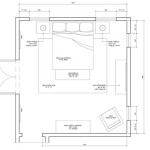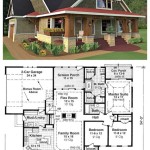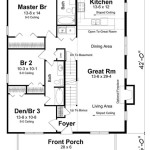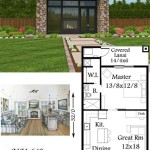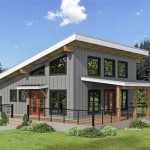Spanish Mediterranean Style House Plans: A Comprehensive Overview
Spanish Mediterranean architecture evokes a sense of warmth, history, and effortless elegance. Characterized by its stucco walls, red tile roofs, arched doorways, and courtyards, this style blends influences from Spain and the Mediterranean region, creating a unique and timeless aesthetic. Spanish Mediterranean house plans are increasingly popular for those seeking homes that are both visually striking and functionally adaptable to various climates.
This article will delve into the defining characteristics, key planning considerations, and enduring appeal of Spanish Mediterranean house plans. Understanding these aspects is crucial for anyone considering building or renovating a home in this distinguished style.
Defining Characteristics of Spanish Mediterranean Architecture
The Spanish Mediterranean style is not merely a collection of visual elements; it represents a cohesive design philosophy. Several features distinguish this architectural style from others, lending it its characteristic charm and functionality.
Stucco Walls: Stucco is a primary material used in Spanish Mediterranean homes. Its textured surface and ability to be molded into various shapes contribute to the style's organic feel. The color palette typically consists of off-white, beige, and earth tones, reflecting the natural hues of the Mediterranean landscape. The thickness of stucco walls also provides excellent insulation, keeping the interiors cool during warm weather and warm during cooler months. The texture can range from smooth to heavily troweled, allowing for variations within the style.
Red Tile Roofs: The iconic red tile roof is perhaps the most recognizable feature of Spanish Mediterranean architecture. These clay tiles, often barrel-shaped, provide excellent durability and weather resistance. Their distinct color adds a vibrant contrast to the lighter-colored stucco walls. The pitch of the roof can vary depending on the region and the size of the house, but a gentle slope is the most common. In some instances, lighter-colored tiles may be used, but the reddish-orange hue remains the dominant choice.
Arched Doorways and Windows: Arches are a recurring motif in Spanish Mediterranean design, adding a sense of grace and sophistication. Doorways, windows, and even interior transitions often feature arched openings. This design element softens the lines of the structure and creates a welcoming atmosphere. The arches can be simple or elaborately decorated with molding or keystones, depending on the desired level of formality.
Courtyards and Patios: Outdoor living spaces are integral to the Spanish Mediterranean lifestyle. Courtyards and patios provide secluded areas for relaxation and entertainment. These spaces are often enclosed by walls or arcades, creating a sense of privacy and intimacy. They are typically adorned with fountains, lush vegetation, and comfortable seating areas. Courtyards also serve as a natural extension of the interior living spaces, blurring the lines between indoors and outdoors.
Decorative Ironwork: Wrought iron is commonly used for balconies, window grilles, gates, and light fixtures. These details add a touch of elegance and craftsmanship to the overall design. Intricate patterns and scrolling designs are characteristic of Spanish Mediterranean ironwork. The dark color of the iron provides a striking contrast against the light-colored stucco and tile. Functionally, it provides security while also enhancing the aesthetic appeal.
Key Planning Considerations for Spanish Mediterranean House Plans
Developing Spanish Mediterranean house plans requires careful consideration of various factors, including site orientation, climate, material selection, and interior layout. Addressing these aspects effectively ensures a cohesive and functional design.
Site Orientation and Climate: The orientation of the house on the site is crucial for maximizing natural light and ventilation. In warmer climates, it is important to position the house to minimize direct sunlight exposure during the hottest part of the day. Overhangs, awnings, and strategically placed windows can help control solar heat gain. Utilizing prevailing breezes for natural ventilation can also reduce the reliance on air conditioning. In cooler climates, maximizing southern exposure can help capture solar heat during the winter months. Courtyards can provide sheltered outdoor spaces that are usable year-round.
Material Selection: Choosing the right materials is essential for achieving an authentic Spanish Mediterranean look and ensuring the longevity of the structure. Stucco, clay tiles, wood beams, and wrought iron are all integral to the style. Selecting high-quality materials that are appropriate for the local climate is crucial. Sustainable and locally sourced materials can also be incorporated to minimize environmental impact. The color palette should be carefully considered to maintain the style's characteristic warmth and earthiness.
Interior Layout and Flow: The interior layout of a Spanish Mediterranean home should be both functional and aesthetically pleasing. Open floor plans that connect living spaces are common, promoting a sense of spaciousness and connectivity. Formal dining rooms, libraries, and studies may also be included, depending on the homeowners' needs. The flow between interior and exterior spaces is also important, with seamless transitions between living rooms, patios, and courtyards. Interior finishes should complement the overall design, with elements such as exposed wood beams, tile floors, and textured walls adding to the style's authenticity.
Landscaping and Outdoor Spaces: Landscaping plays a crucial role in enhancing the overall aesthetic of a Spanish Mediterranean home. Lush vegetation, including palm trees, citrus trees, and flowering shrubs, can create a vibrant and inviting atmosphere. Fountains, ponds, and other water features can add a sense of tranquility. Hardscaping elements, such as stone pathways, patios, and retaining walls, should be carefully designed to complement the architecture. Outdoor lighting can also be used to highlight architectural features and create a warm and inviting ambiance at night.
Enduring Appeal and Modern Interpretations
The enduring appeal of Spanish Mediterranean architecture lies in its timeless elegance, warmth, and connection to nature. While rooted in tradition, this style is also adaptable to modern lifestyles and design preferences. Modern interpretations of Spanish Mediterranean house plans often incorporate contemporary features while retaining the style's defining characteristics.
Adaptability to Modern Lifestyles: Modern Spanish Mediterranean homes often feature open floor plans, updated kitchens, and luxurious bathrooms. These features enhance functionality and comfort while maintaining the style's aesthetic appeal. Smart home technology can also be seamlessly integrated into the design, providing convenience and efficiency. The key is to blend these modern elements with the traditional features in a way that feels harmonious and cohesive.
Sustainability and Energy Efficiency: Incorporating sustainable design principles into Spanish Mediterranean house plans is increasingly important. Energy-efficient windows, insulation, and HVAC systems can significantly reduce energy consumption. Solar panels can be integrated into the roof design to provide a renewable energy source. Water-efficient landscaping practices, such as using drought-tolerant plants and implementing rainwater harvesting systems, can also help conserve water. These sustainable features can enhance the value and appeal of the home while minimizing its environmental impact.
Regional Variations and Influences: Spanish Mediterranean architecture has evolved over time, with regional variations reflecting local influences. In California, for example, Spanish Colonial Revival architecture is a popular adaptation of the style, characterized by its white stucco walls, red tile roofs, and arched openings. In Florida, Mediterranean Revival architecture features a more elaborate and ornate style, with Moorish influences and intricate detailing. Understanding these regional variations can help homeowners choose a design that is appropriate for their location and personal preferences.
Blending Styles: While maintaining the core characteristics of Spanish Mediterranean architecture is important, blending it with other styles can create unique and personalized homes. For example, incorporating elements of contemporary design, such as clean lines and minimalist details, can create a modern take on the classic style. Combining Spanish Mediterranean with elements of Tuscan or Moroccan design can also result in visually stunning and eclectic homes. The key is to carefully consider the proportions, materials, and details to ensure a cohesive and harmonious design.
Spanish Mediterranean house plans offer a timeless and elegant design solution for those seeking homes that are both beautiful and functional. By understanding the defining characteristics of the style, considering key planning factors, and exploring modern interpretations, homeowners can create homes that are truly reflective of their personal style and preferences. By carefully considered implementation, a Spanish Mediterranean home can be a sanctuary for decades to come.

Mediterranean Style House Plan 3 Beds 5 Baths 3242 Sq Ft 27 418 Country Plans Floor

Mediterranean Style House Plan 4 Beds 3 5 Baths 4923 Sq Ft 135 166 Houseplans Com

Mediterranean Style House Plan 4 Beds 3 5 Baths 3163 Sq Ft 72 177 Plans Courtyard Ranch

Mediterranean Houseplans Home Design Wdgf2 4496 G 13282

Spanish Style House Plans Home Designs The Designers
Spanish Mediterranean Home Plan 6095 Sq Ft House 107 1020

House Plans Home And Floor From Ultimate Luxury Mediterranean Homes Style

Mediterranean House Plans Sater Design Collection

Spanish Mediterranean Style Beautiful Home Floor Plan 4651 0606

Mediterranean House Plans Style Homes

